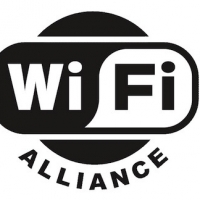Better and Faster Wireless Networks with 802.11ac

Are you finding that your wireless network is just not keeping up with your need for faster content and application delivery? The recently announced 802.11ac wireless standards have the potential to change the network landscape by bringing high-bandwidth-demanding streaming media content to a wide variety of wireless devices. This could be great news not only for the folks who watch their favorite soap on the bus, but also for utilities that gather data from far-flung devices.
The need for new wireless network standards is clear. As the consumption of wireless networks in all forms becomes ubiquitous, users need fast, reliable bandwidth to support the more demanding MTM (machine to machine), video, and voice applications. The newly published standard IEEE 802.11ac (Gigabit Wi-Fi or 5G Wi-Fi) and the somewhat older 802.16e (Wireless Broadband or WiBro) are both promising new technologies that are or will be soon available to address the wireless performance gaps.
IEEE 802.11ac, the newest wireless network standard, builds on the now common 802.11n and supports up to 1733Mbps of wireless connection speed on the 5Ghz frequency band. Announced in June 2013, the standard addresses long time consumer demands for features that can support fast and efficient data transfer rates, higher encoding densities, more data link streams, and the ability to shape the wireless transmission.
This last feature, also known as beam shaping, will be especially useful for creating longer range mesh networks, which could potentially cut the number of access points needed for adequate coverage—good news for those folks living on large spreads or municipalities building muni-networks.
Since the standard is still relatively new, most routers still support the older, slower network speeds for backwards compatibility. The available products run about one hundred fifty to three hundred dollars, depending on the included features. Of course, to take advantage of all the features, all the connected devices need to be 802.11ac enabled as well.
Another interesting high speed wireless option is 802.16e or WiBro. The technology is based on the 802.16e standard, which is more commonly known as the WiMAX standard in the US. Unlike Gigabit Wi-Fi, which is primarily designed for relatively small stationary installations, WiBro is designed for large scale mobile coverage in order to provide a high speed Internet solution for local consumers.
Access is from a small device colloquially referred to as an egg due to its original shape. Currently only widely available in South Korea—only the most wired country in the world—it is a popular option for high speed connectivity with data speeds of up to 10 Mbps.

